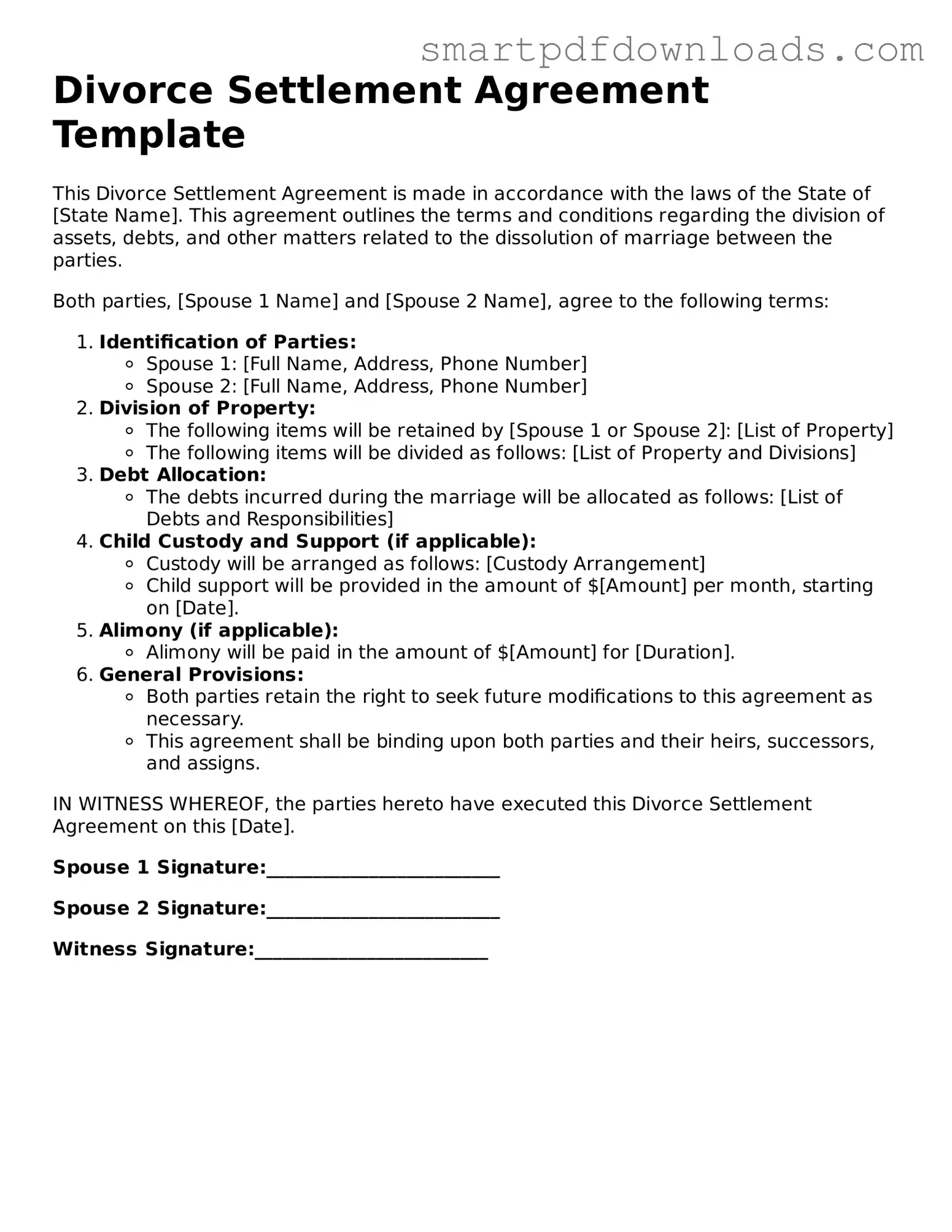Divorce Settlement Agreement Template
This Divorce Settlement Agreement is made in accordance with the laws of the State of [State Name]. This agreement outlines the terms and conditions regarding the division of assets, debts, and other matters related to the dissolution of marriage between the parties.
Both parties, [Spouse 1 Name] and [Spouse 2 Name], agree to the following terms:
- Identification of Parties:
- Spouse 1: [Full Name, Address, Phone Number]
- Spouse 2: [Full Name, Address, Phone Number]
- Division of Property:
- The following items will be retained by [Spouse 1 or Spouse 2]: [List of Property]
- The following items will be divided as follows: [List of Property and Divisions]
- Debt Allocation:
- The debts incurred during the marriage will be allocated as follows: [List of Debts and Responsibilities]
- Child Custody and Support (if applicable):
- Custody will be arranged as follows: [Custody Arrangement]
- Child support will be provided in the amount of $[Amount] per month, starting on [Date].
- Alimony (if applicable):
- Alimony will be paid in the amount of $[Amount] for [Duration].
- General Provisions:
- Both parties retain the right to seek future modifications to this agreement as necessary.
- This agreement shall be binding upon both parties and their heirs, successors, and assigns.
IN WITNESS WHEREOF, the parties hereto have executed this Divorce Settlement Agreement on this [Date].
Spouse 1 Signature:_________________________
Spouse 2 Signature:_________________________
Witness Signature:_________________________
